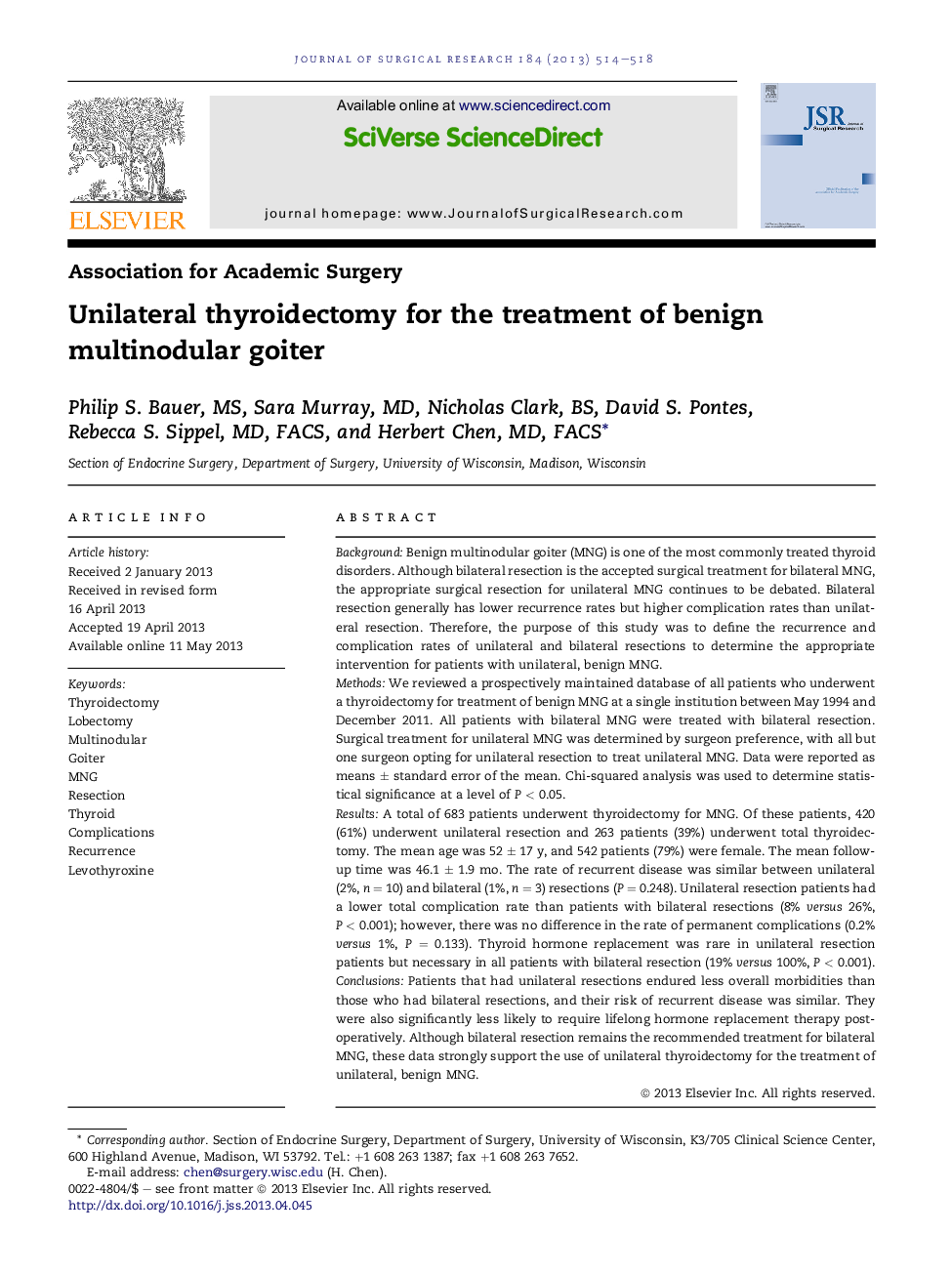| کد مقاله | کد نشریه | سال انتشار | مقاله انگلیسی | نسخه تمام متن |
|---|---|---|---|---|
| 4300642 | 1288422 | 2013 | 5 صفحه PDF | دانلود رایگان |

BackgroundBenign multinodular goiter (MNG) is one of the most commonly treated thyroid disorders. Although bilateral resection is the accepted surgical treatment for bilateral MNG, the appropriate surgical resection for unilateral MNG continues to be debated. Bilateral resection generally has lower recurrence rates but higher complication rates than unilateral resection. Therefore, the purpose of this study was to define the recurrence and complication rates of unilateral and bilateral resections to determine the appropriate intervention for patients with unilateral, benign MNG.MethodsWe reviewed a prospectively maintained database of all patients who underwent a thyroidectomy for treatment of benign MNG at a single institution between May 1994 and December 2011. All patients with bilateral MNG were treated with bilateral resection. Surgical treatment for unilateral MNG was determined by surgeon preference, with all but one surgeon opting for unilateral resection to treat unilateral MNG. Data were reported as means ± standard error of the mean. Chi-squared analysis was used to determine statistical significance at a level of P < 0.05.ResultsA total of 683 patients underwent thyroidectomy for MNG. Of these patients, 420 (61%) underwent unilateral resection and 263 patients (39%) underwent total thyroidectomy. The mean age was 52 ± 17 y, and 542 patients (79%) were female. The mean follow-up time was 46.1 ± 1.9 mo. The rate of recurrent disease was similar between unilateral (2%, n = 10) and bilateral (1%, n = 3) resections (P = 0.248). Unilateral resection patients had a lower total complication rate than patients with bilateral resections (8% versus 26%, P < 0.001); however, there was no difference in the rate of permanent complications (0.2% versus 1%, P = 0.133). Thyroid hormone replacement was rare in unilateral resection patients but necessary in all patients with bilateral resection (19% versus 100%, P < 0.001).ConclusionsPatients that had unilateral resections endured less overall morbidities than those who had bilateral resections, and their risk of recurrent disease was similar. They were also significantly less likely to require lifelong hormone replacement therapy postoperatively. Although bilateral resection remains the recommended treatment for bilateral MNG, these data strongly support the use of unilateral thyroidectomy for the treatment of unilateral, benign MNG.
Journal: Journal of Surgical Research - Volume 184, Issue 1, September 2013, Pages 514–518